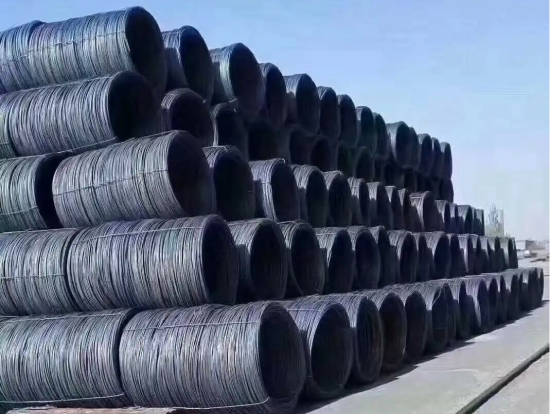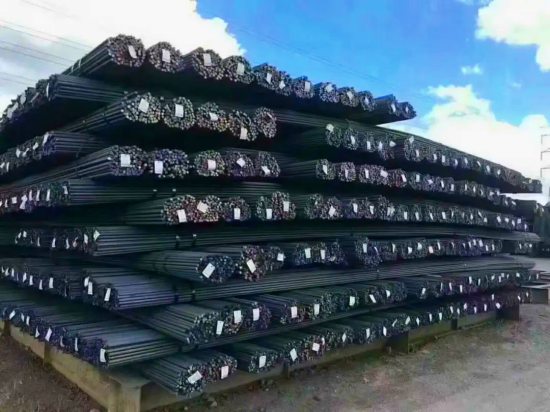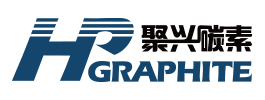【Steel Prices】After the Frenzy, Nothing but Bubbles – October Steel Price Forecast…

Graphite electrodes are the "lifeline" of EAF steelmaking! As the core material for arc conduction and heating, they feature high conductivity and heat resistance, directly affecting molten steel quality and output. Mastering graphite electrodes means mastering the initiative in EAF steelmaking!
【Steel Prices】After the Frenzy, Nothing but Bubbles – October Steel Price Forecast…
In the subtle balance between market supply and demand, steel prices in October are walking a tightrope between rise and fall. As the traditional peak season of the steel market, the "Golden September and Silver October" period often carries the highest expectations among practitioners. However, steel prices in October 2025 may struggle to present a unilateral upward trend. Following the rebound from a nearly seven-year low since July, the market is now searching for a new equilibrium point.

Analysts predict that steel prices in October are more likely to show a volatile and weakening trend. However, underpinned by cost support and policy backstops, the downside potential remains limited. This judgment mainly stems from subtle changes in the fundamentals of supply and demand: the seasonal improvement in demand and the intensifying game against supply-side pressure.
Market Review: Rebound from a Seven-Year Low
Since the second half of 2025, the domestic steel market has improved overall. Supported by policies and a mild recovery in demand, steel prices have gradually moved away from their lowest level in nearly seven years. In June, steel prices fluctuated with enhanced downside support, but market expectations for the future remained weak. Entering July, prices began a rebound trend, mainly driven by rising expectations of "anti-involution" related policies. Confidence across the entire steel industry chain recovered, and stockpiling willingness increased. In August, the market underwent a correction, policy-driven speculation paused, and the contradiction of insufficient downstream rigid demand resurfaced. This "rise then fall" pattern has sown seeds of uncertainty for the traditional peak season in September and October.
Historical data also does not support the conventional wisdom that "Golden September and Silver October" necessarily lead to price increases. Statistics show that since 2013, steel prices in September and October have risen in 5 years but have fallen in 8 years. Thus, seasonal patterns are not very significant in the steel market.
Demand-Side Analysis: Seasonal Recovery with Structural Weakness
From the perspective of terminal demand, downstream orders already showed some improvement in the second half of August. This recovery trend is expected to extend into September, but by October, demand may once again reveal weakness.
Demand for construction steel shows a divided trend. On one hand, the accelerated issuance of special-purpose bonds has released infrastructure demand—by the end of September, the issuance of special-purpose bonds had reached RMB 3.13 trillion, leaving more than RMB 700 billion worth of space still to be tapped. On the other hand, the continued downturn in the real estate sector will still suppress construction steel demand, despite recent easing in mortgage policies.
Major engineering projects bring highlights to the steel market. The downstream section of the Yarlung Tsangpo River hydropower project (with an investment of about RMB 1.2 trillion) and the Sichuan–Tibet Railway (with an investment of about RMB 400 billion) have both fully commenced, generating tens of millions of tons of steel demand.
Manufacturing demand has shown some resilience. Production and sales in industries such as automobiles and home appliances have maintained steady growth, supporting flat steel products. Exports have been particularly strong, with rebar and wire rod export volumes in January–June rising year-on-year by as much as 42%–90%.

Supply-Side Conditions: Output Control and Increased Maintenance
The supply side is showing signs of tightening. Data shows that in the second week of August, production of major steel products reached 12.6833 million tons, down 1.34 million tons from July. Steel mills are facing a lukewarm production situation.
Rising raw material prices have squeezed the profit margins of finished steel, leading to more frequent maintenance shutdowns at steel plants. From a sentiment perspective, steelmakers' overall confidence in September remains weak, and production plans have contracted.
Policies have also had an important impact on supply. China's "anti-involution" policies in the steel industry have already shown results, eliminating outdated capacity, promoting ultra-low emission retrofits, and restricting disorderly competition among steel plants. The contraction of production capacity has eased price wars among mills, providing certain support for steel prices.
Industry consolidation has accelerated. Policies such as the Steel Industry Stabilization Work Plan are promoting joint restructuring in the industry, reducing non-market barriers, and optimizing the supply-demand structure. These measures are expected to help achieve a higher-quality balance in the steel industry.
Cost Support Factors: Raw Material Price Fluctuations and Global Influences
Cost support for steel prices still exists. Recently, iron ore prices have rebounded, while coke prices remain firm, pushing the cost of billet production up by 2.9% month-on-month.
The supply-demand balance of the iron ore market may undergo a shift. From 2024 to 2026, global iron ore production is expected to increase. In 2025, iron ore supply from Australia and Brazil is projected to increase by 35.65 million tons and 12 million tons respectively. This will shift the iron ore market toward a looser supply-demand balance.
Global monetary policy environments also have a significant influence on steel costs. Major central banks such as the Federal Reserve and the European Central Bank have successively cut interest rates, ushering the world into a cycle of monetary easing, which will provide medium- to long-term support for commodity prices.
Exchange rate fluctuations of the U.S. dollar cannot be ignored either. Dollar depreciation will amplify the cost transmission effects of imported raw materials such as iron ore, indirectly pushing up domestic steel prices. This type of imported cost pressure could become an important variable affecting steel prices in October.
October Steel Price Comprehensive Forecast: Volatile and Weak, But Limited Downside
Considering the fundamentals of supply and demand, cost support, and market sentiment, steel prices in October are expected to show a volatile and weakening trend. The downside potential is widely believed to be limited.
In September, the market fluctuated with an upward bias, driven by temporary demand strength and manageable supply pressures, so supply-demand contradictions were not pronounced. In October, however, supply-side output is expected to pick up, while demand may fall short, and this imbalance could lead to a volatile and weakening trend in steel prices.
Different steel product categories may diverge in performance. Construction steel may be relatively resilient, supported by infrastructure demand, while flat steel products will depend more on the prosperity of manufacturing. Regional differences will also become apparent: western regions, boosted by major engineering projects, may see stronger prices than eastern regions.
A sharp decline in October steel prices is unlikely. The outlook for steel prices in the second half of the year remains one of volatile strength, and with cost support and policy backstops, the downside is limited.
As the supply-demand game enters a new stage, the steel market in October may present a pattern of "moderate demand improvement, rational supply control, and volatile price operation." This judgment is mainly based on subtle changes in fundamentals: the seasonal improvement in demand and the intensifying game with supply-side pressure.
Feel free to contact us anytime for more information about the EAF Steel market. Our team is dedicated to providing you with in-depth insights and customized assistance based on your needs. Whether you have questions about product specifications, market trends, or pricing, we are here to help.
No related results found








0 Replies